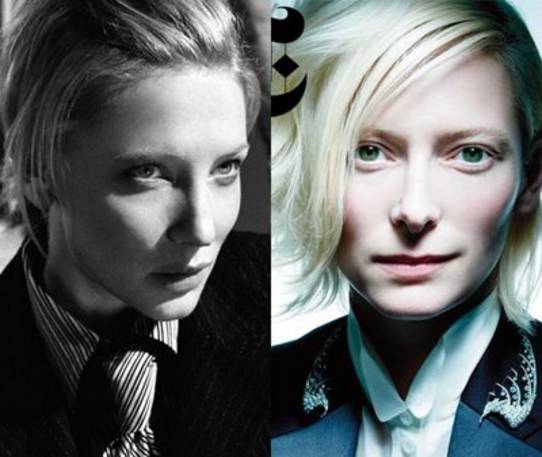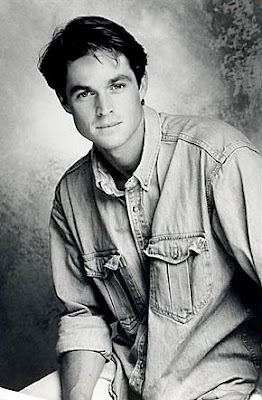


In 1991 Camille Paglia published “Sexual Personae”, which is essentially her Yale dissertation done under the aegis of the eminent scholar Harold Bloom. The book, in her words: “…surveys literature and art from antiquity to the end of the nineteenth century.” “Sexual Personae”, while not written in the typical academic style, is a scholarly work combining a thesis substantiated with factually documented research. Specifically, her thesis is “to demonstrate the unity and continuity of western culture”, for which she provides voluminous supporting data and interpretations. For example, ‘androgyny’ is one of many features appearing throughout the history of Western art and literature, thereby giving “unity and continuity” to Western culture.
Art, Culture & Social Science
Paglia is not simply an art historian and commentator. She is a philosopher and social scientist. In the manner of science: based on observable detailed descriptions of art, she makes logical inferences about the culture (social values) of the art producing society.
Art forms are not seen solely as aesthetic values. Art is also seen as a manifestation of social values. From observable aesthetic characteristics, inferences are made about the subliminal (non-observable) social values.
For example, given the androgynous representation of Athena, Paglia wants to know what those representations tell us about the culture of Athens. She writes: “We must explain why the armed Athena prevailed in Athens…What does Athena’s androgyny mean [to the Athenians]?” Essentially, one of the questions “Sexual Persona” asks and answers: What do the androgynous features of Western art mean to the people of Western Culture?
Androgyny and Art
Androgyny in its simplest definition is: “The mixing of masculine and feminine characteristics… an androgynous person does not fit cleanly into the typical masculine and feminine gender identities of their society.” However, as Paglia demonstrates with incredible (painful) detail, the nature of the “mixing” and the types of “identities” varies profoundly throughout the history of Western art, and the values of Western societies (she argues) vary in tandem with the various androgynous representations.
For example, in Ancient Greece, androgynous Athena is represented in distinct male or female forms. Sometimes the goddess appears as a female and sometimes a male. “In the Iliad, Athena appears four times as a male, and six times in her own form.” In the Odyssey, “She appears eight times as a male, twice as a human girl, six times as herself.” Also in the Odyssey, she transforms herself in front of Odysseus from a “young shepherd [into] a women, tall, beautiful, and accomplished…her sexual duality is also expressed by her masculine armour.”
Alternatively, during the Renaissance, androgynous art shows a “mixing of masculine and feminine characteristics” in the same form. The beautiful boy is “repeated in a thousand forms in Italian painting and sculpture, he is the ultimate symbol of Renaissance art”; quintessentially exemplified by Donatello’s David. “David has long feminine locks of hair, tangled with ribbons, a splendidly raffish wreathed hat...[and] exquisitely etched leather buskins.” More generally, “Donatello’s youths are always sexually ambiguous.”
Androgynous Art and Culture
However, as noted, Paglia is not content with simply describing the evolution of androgynous images in Western art. She seeks to demonstrate how those images are associated with social values of the times.
For example, she writes: “I propose the answer to Athena’s androgyny…Athena appears in many disguises and crosses sexual borderlines [because] she symbolizes the resourceful, adaptive mind, the ability to invent, plan, conspire, cope and survive”; all social values that were fundamental to Greek culture. In short, Paglia argues: the social values of ancient Greek society were expressed in Greek art in the form of androgynous Athena.
Similarly, Renaissance androgynous “beautiful boy” art correlates with social values of the time such as courtly manners. Paglia writes: “Castiglione’s Book of the Courtier which had enormous influence all over Europe, set standards of taste for dress and deportment. The courtier is…an androgyny: he has ‘special sweetness,’ a ‘grace’ and ‘beauty’. By making speech and movement seem effortless, they disguise or efface masculine action. The woman is central to the Book of the Courtier.”
Androgyny and TV Crime Shows
As noted above, “Sexual Persona” does not deal with twentieth century art and culture. However, because the work is philosophical and scientific, it has generality. Her concepts and methods can be extrapolated and used to analyze contemporary pop and lowbrow art, in an effort to understand the values of society today. For example, TV crime shows clearly manifest “mix-androgynous” characters; i.e. masculinized women and feminized men are prominent in such programs.
Mix-androgynous lead characters can be seen on virtually all the major TV crime shows. The women FBI agents, CSI investigators and detectives have ‘big hair’, puffy lips, bright eyes, painted faces and fashion model bodies; they wear tank-top shirts showing cleavage, high heels and tight paints outlining their backsides.
Mixed with these quintessential famine characteristics are equally quintessential masculine traits: they have deep raspy voices, talk in ‘tough guy’ street idiom, guns ostentatiously on their hips, expert practitioners of marshal arts, lead SWAT team charges into shooting barrages, drink beer out of a bottle and ‘throw back’ shots of alcohol in predominately men’s ‘cop bars’. 
![]()
See for example shows and characters such as: “Numbers” Nikki Betancourt and Liz Warner; “Without a Trace” Samantha Spade and Elena Delgado; “CSI” Catherine Willows (above right); “CSI New York” Stella Bonasera; “CSI Miami” Calleigh Duquesne (above left) and Natalia Boa Vista; “Criminal Minds” Emily Prentiss; “In Plain Sight” May Shannon.
On the same programs are equally mix-androgynous male characters who are soft spoken gentlemen manifesting no powerful male characteristic such as muscles, hairy chest, (unlike the women) never wear tank top-shirts, guns are hidden by suit jackets; in short, like Castiglione’s courtiers they have ‘grace’, ‘beauty’ and a complete absence of machismo a la Clint Eastwood.
See for example shows and characters: “Numbers” Charlie Eppes (above left) and Larry Fleinhardt; “Without a Trace” Martin Fitzgerald (above right) and Danny Taylor; “CSI” Gil Grissom and Greg Sanders; “CSI-New York” Don Flack and Sheldon Hawkes; “CSI-Miami” Horatio Caine and Eric Delko; “Criminal Minds” Aaron Hotchner and Spencer Reid; “In Plain Sight” Marshall Man.
What do the ubiquitous mix-androgynous characters on TV crime shows im ply about our culture? One theory is that these lowbrow art forms are a refection of prevailing feminist philosophy in our society. Paglia has pejoratively characterized contemporary feminism as: “men must be like women and women can be whatever they like. Androgyny is a cancellation of male concentration and projection.” Clearly, the above list of shows can be accurately described as depicting “cancellation of male concentration and projection” and women being “whatever they like”.
ply about our culture? One theory is that these lowbrow art forms are a refection of prevailing feminist philosophy in our society. Paglia has pejoratively characterized contemporary feminism as: “men must be like women and women can be whatever they like. Androgyny is a cancellation of male concentration and projection.” Clearly, the above list of shows can be accurately described as depicting “cancellation of male concentration and projection” and women being “whatever they like”.
The Sopranos No androgynies here - total “male concentration and projection”
Categorically juxtaposed to the above TV crime shows is The Sopranos. There is nothing remotely androgynous about the characters on this program. All the characters are quintessential and unequivocally male or female. The men (like the women in crime shows) wear tank-top shits showing muscular bodies and hairy chest. They are tough looking, acting and talking. They are manifestations of total “male concentration and projection.” Similarly, the ‘women are women’, totally feminine showing virtually no male characteristics.
Why Italian Americans love the Sopranos
One of the most vexing questions that have been discussed on ad infinitum is why the ostensively negative portrayal of Italian Americans in The Sopranos series is popular with Italian Americans. Once again, Paglia points to a theory. She writes: “Androgyny [understood] as cancellation of male concentration and projection [prevails with] bourgeois academics and writers in college English departments [but] cuts no ice at the corner garage. Male concentration and projection are visible everywhere in the aggressive energy of the streets.”
To my mind, the complaining about the Sopranos has come largely from the Italian American literati. The Italian Americans at the “corner garage” and “on the street” love the program because they see the fundamental cornerstone of their culture depicted in the ‘men are men’ and ‘women are women’ images. These male and female role models are the historic ones going back to southern Italy and Sicily. Contemporary American culture is redefining those role models. But, Italian Americans (70% who are not college graduates) are not impressed with the highbrow “bourgeois academic” culture of the literati. They still are of the ancient southern Italian/Sicilian peasant mindset, and they see and appreciate those ancient values portrayed in the Sopranos’ characters.
In sum: Anthony Tamburri in his 2003 Melus article “Beyond ‘Pizza and ‘Nonna’…” argued: “I do believe that we have come late to theoretical issues as part of our analytical arsenal [necessary] if we are to … travel beyond the confines of Italian America.”
Camille Paglia is a mighty Italian American thinker who has provided us with “theoretical issues” and “analytical arsenal” that allows us to “travel beyond the confines of Italian America.” She has provided us with a theoretical concepts and research methods to analyze our own art and culture and place it in the context of the broader contemporary American culture and historic Western culture.
Source URL: http://ftp.iitaly.org/magazine/focus/op-eds/article/camille-paglias-androgyny-aesthetics-why-italian-americans-love
Links
[1] http://ftp.iitaly.org/files/9825androg-41244930819jpg